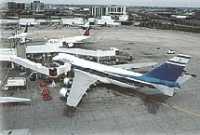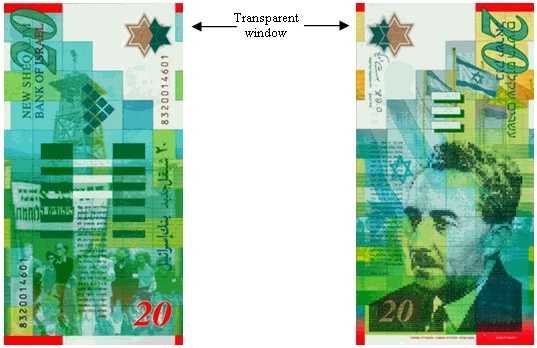The new NIS 20 banknotes will be put into general circulation from 13 April 2008. At the same time a special issue of 1,800,000 polymer banknotes commemorating Israel’s 60th anniversary will be put into circulation
The Bank of Israel announces that from 13 April, NIS 20 banknotes printed on polymer will be put into general circulation via the commercial banks and the Postal Bank.
From 13 April the Bank will also issue a limited quantity of 1,800,000 polymer banknotes with a special inscription (in Hebrew) referring to Israel’s sixtieth anniversary. These notes will be available only from automatic cash dispensing machines that dispense NIS 20 notes. Such machines are available at the branches of Discount Bank, Mercantile Discount Bank and Otsar Hahayal Bank.
The new polymer banknotes will be in circulation in tandem with the current paper notes.
The quality of NIS 20 paper banknotes in circulation at present is very low, as the notes change hand very frequently. The use of polymer instead of paper will increase the durability of the banknotes and their lifespan in circulation.
Polymer is a plastic-type material that has important advantages when used for banknotes; one of these is its high durability, which extends their life. In light of the advantages offered by polymer, its use is growing throughout the world, and currently twenty-six countries use it in the production of their banknotes, including Australia, Hong Kong, New Zealand and Singapore. Israel thus becomes the twenty-seventh country to adopt polymer banknotes.
The design on the polymer notes is the same as that on the paper notes, except for small changes in the security features. The most notable of these is a transparent window in the polymer notes, as shown below, which is easily recognizable by the public. The window has the number “20” embossed on it.
The process of putting the new notes into circulation will be based on the experience gained by the twenty-six countries referred to above, and will be carried out under guidance of the Australian company Securency, producers of the material from which the banknote is manufactured.
Since January 2008 the Bank of Israel has informed and guided those who handle large quantities of cash, about the forthcoming entry into circulation of the polymer banknotes and their handling. Among those with whom the Bank cooperated during the process were the banks, public transport companies, petrol companies, large supermarket and drugstore chains and traders organizations.
In February the Bank issued samples of the polymer banknotes to banks, importers of the mechanisms used in automatic machines, and companies operating such machines, to enable them to calibrate the machines and prepare them for use with polymer notes.
Some operators of automatic machines have not yet completed the process of adjusting them to the polymer notes; they are expected to do so in the next few weeks.
New NIS 20 banknotes printed on polymer
The new NIS 20 banknotes will be put into general circulation from 13 April 2008. At the same time a special issue of 1,800,000 polymer banknotes commemorating Israel’s 60th anniversary will be put into circulation
21.04.08 / 00:00
•
More articles that may interest you

Haifa port workers set up a cooperative to buy share of the port

Long delays at the Nitzana Israel Egypt border crossing

Zim adds the port of Hong Kong to its new EWX service

Izzy Borovich to sell Knafaim stake to his brother

New civil aviation agreement was signed between Israel and Italy

El Al considering to end freighter flights to Asia
More news from Industry & Trade Section
>MAI: Sale of counterfeit and out of date pharmaceuticals in 2007 was NIS 100-130 million/14.04.08
>Bank of Israel forecasts slower economic growth in 2008/07.04.08
>Cherry Farmers seek permission to Export to Syria/07.04.08
>Israel Export Institute: exports will have dramatic slowdown in 2008/07.04.08
>2007 Net profit drops at Israel Corp. as expenses rise/07.04.08
>Cosco: productivity at Ashdod port has increased due to new service arrangements/07.04.08
>Israel officially joined OECD Development Center/31.03.08
>Israel's ‘Apple Diplomacy’ with Damascus/31.03.08
>Haifa Port gets its first fixed container scanner/31.03.08
>CBS: Israel's Economy grew by 5.3% in 2007/24.03.08
